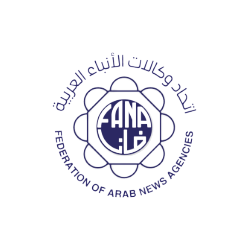
-
Arab-China Cooperation Forum to hold seventh edition on radio and television2 November 2025

-
Kuwait environmental sustainability constitutes developmental strategic pillar,

-
Qatar’s Nature Reserves: Enhancing Sustainability of Ecosystems, Preserving Wildlife

-
E-Waste Recycling: A Win-Win for the Environment and the Economy


IMF Mission Concludes Visit to Oman
IMF
Mission Concludes Visit to Oman
Muscat,
25 Nov 2025 (ONA) — The meetings of the International Monetary Fund (IMF)
experts mission to the Sultanate of Oman, within the framework of the 2025
Article IV Consultations, concluded in Muscat.
During
the meetings, discussions were held with a number of officials in government units
and representatives from the private and banking sectors regarding the latest macroeconomic
developments and expected future outlook, as well as fiscal and monetary
policies, financial sector development, and structural reforms.
The
IMF expert mission affirmed in the concluding statement of its meetings that Oman’s
economic growth remained strong in 2024 and the first half of 2025, supported
by expansions in manufacturing, wholesale and retail, logistics, construction,
and agriculture and fishing, while hydrocarbon GDP contracted due to OPEC+
production curbs.
The
statement indicated that inflation in Oman eased to 0.6 percent in 2024 and
remained contained at 0.9 percent during January-October 2025. The fiscal
balance posted a surplus of 3.3 percent of GDP in 2024, while the current
account also recorded a surplus of 3.2 percent of GDP. Government debt stood at
36.1 percent of GDP by September 2025.”
The
economic outlook remains favorable, as per the statement. Growth is projected
to strengthen over 2025–26 as oil production cuts unwind and nonhydrocarbon
activity continues to expand. Inflation is expected to stay low and converge
toward 2 percent over the medium term.
Fiscal
and external positions are anticipated to remain solid, with fiscal surpluses
projected to persist. The current account is projected to shift into deficit in
2025–27, driven mainly by lower oil prices, before gradually returning to
surplus as oil production recovers toward potential capacity and nonhydrocarbon
exports strengthen.
The
nonhydrocarbon primary deficit is estimated to have narrowed by 2 percent of
nonhydrocarbon GDP in 2025, supported by expenditure restraint and improved
nonhydrocarbon revenue collection.
“Continued
progress on tax administration modernization, rolling out VAT e-invoicing, and
introducing a personal income tax on high-income earners in 2028 will be
central to reinforcing fiscal sustainability. Further fiscal reforms—including
rationalizing non-essential current spending, phasing out untargeted energy
subsidies, while protecting the most vulnerable, strengthening the medium-term
fiscal framework, and developing a sovereign asset–liability management
framework—will be essential to entrench fiscal sustainability and enhance
policy credibility.”
The
steadfast implementation of the Monetary Policy Enhancement Project—including
introducing an Omani Rial standing deposit facility and operationalizing the
interest rate corridor—, and gradually transitioning to a full-fledged treasury
single account will strengthen monetary policy transmission.
Further,
the statement indicated that continued efforts to strengthen the
macroprudential framework, enhance granularity of regulatory data and
supervisory capacity, improve the financial safety net and crisis management,
and deepen capital markets to diversify financing sources for the private
sector will be essential to safeguarding financial stability and fostering
financial sector development.
The
statement pointed out that the 11th Development Plan presents an important
opportunity to accelerate economic diversification, boost productivity, and
create more private-sector jobs for Omanis. Priorities include advancing labor
market reforms, improving the business environment, strengthening market
competition to increase private sector participation in the economy, enhancing
SME support, deepening trade integration, pursuing renewables initiatives, and
scaling up the digital transformation—including AI readiness.”
—Ends/AG